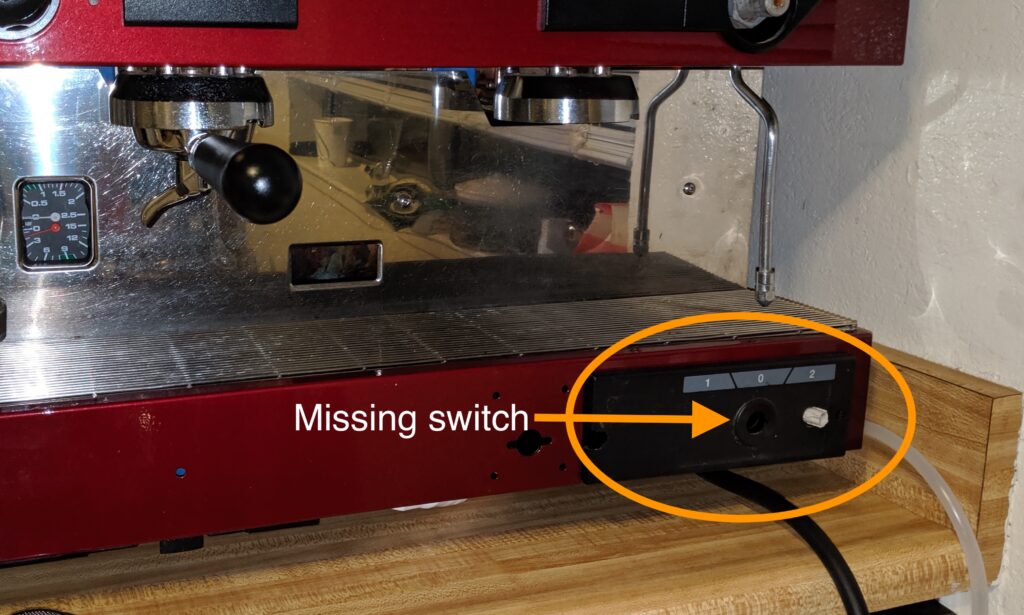
If I only had a brain…
So, I’m not sure if anyone has noticed that in the previous pictures (all of them) one of the main components that my machine has been missing since I bought it is the main rotary switch. You can see in the first picture there’s just a hole where the switch was, and the neon lamp just hanging out of another hole in the front. I’ve been turning it off and on by plugging it in when I want to use it an unplugging it later (as you can see by the date of this post, I’ve obviously been just fine doing that for a while). These switches are heavy-duty cam-type switches that almost all espresso machines of this vintage use, and it turns out, they’re also really expensive. To get the correct one for this machine, the switch was $224! I think I can do better.

This is a relatively simple machine with two DPST switches controlling everything in it, and a boiler heater that just turns on when you turn the switch on (which could potentially fry itself if the boiler is empty). I thought it was time to do some magic and create a smarter control board for the machine. My goals are as follows:
- Control the main power of the machine
- Manage the boiler level
- Only turn on the boiler heater when the boiler is full
- Brew coffee!
This started out (as always for me) on a protoboard. Below you can see my Atmel ATMega328P (same microcontroller as an Arduino Uno) attached with some transistors to drive a few relays. I have one relay for each grouphead valve, one for the pump and one for the boiler fill valve. Off to the side you can see a large (20A, 360VAC) relay for controlling the boiler heater. This is how I’ll accomplish control of everything. It’ll consume a small amount of idle power (when everything is off, but the microcontroller is still on), but when the ATMega328P goes to sleep it consumes about 0.1 µA. It would be ideal if all this could fit in the same space as the old level control board.

